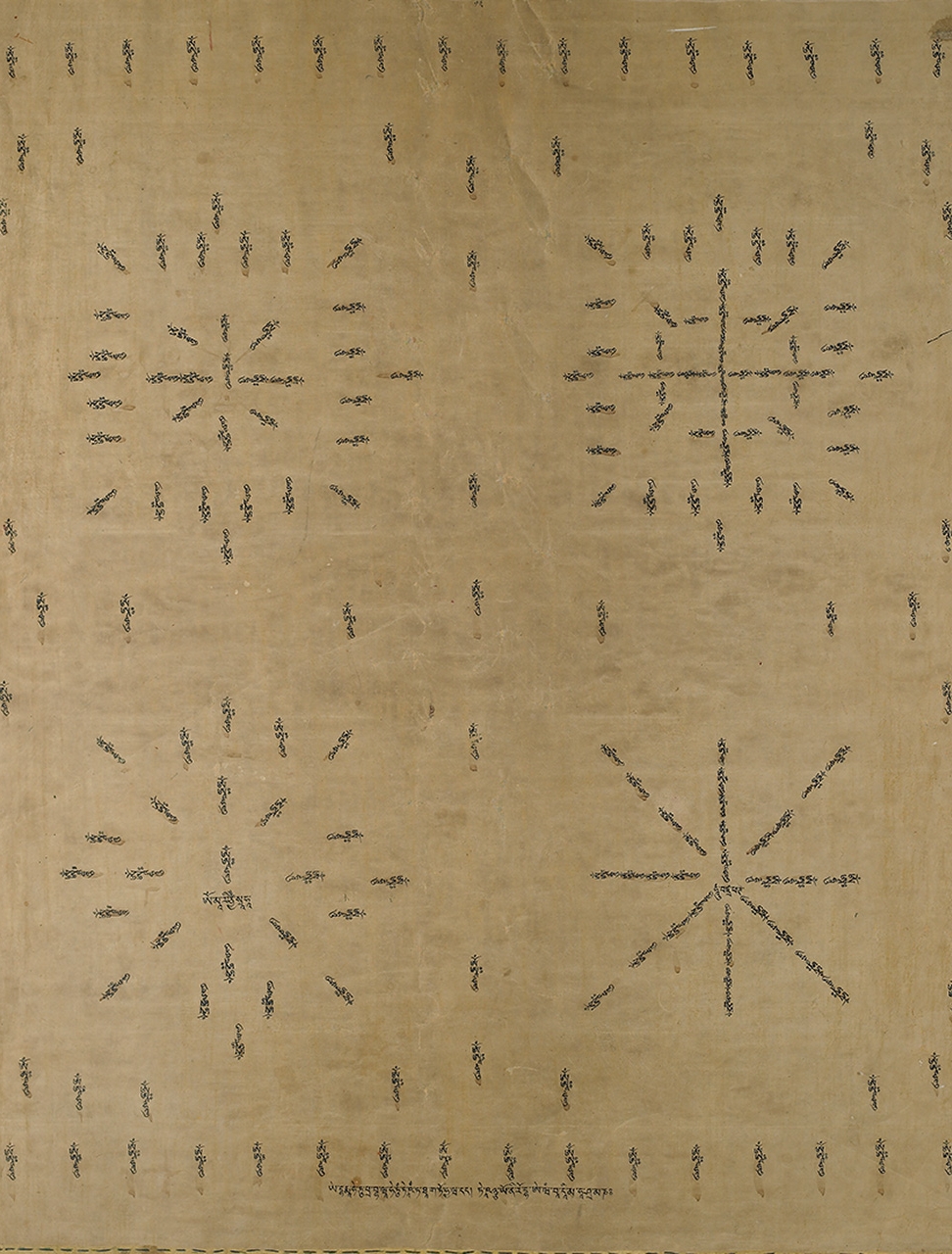
This exquisite thangka is the thirteenth painting in a set depicting the mandalas of the Vajravali cycle, a compendium of Esoteric teachings compiled by the eleventh-century Indian master Abhayakaragupta and widely transmitted in Tibet.
This painting is from the set commissioned by the founder of Ngor Ewam Monastery (1429), Ngorchen Kunga Zangpo (1382–1456), in memory of his deceased teacher Sazang Phakpa Shonnu Lodro (1358–1424?). Details of this set’s creation were recorded in Ngor monastic histories, which recount that it was made at Ngor Monastery by six itinerant Newar artists who came from the Kathmandu Valley, in Nepal, to paint them, including the famous artist Wangguli. Ngor Monastery became particularly famous for such meticulous, intricately painted mandalas—recognizable by a rich red and blue palette highlighted in yellow—that closely followed Newar aesthetics inherited from such itinerant Nepalese master painters.
Remarkable for its near pristine condition, this painting represents the culmination of Newar artisanship in southern-central Tibet, its refinement indicated by the size and precision of the figures, the variation in the delicate vegetal scrolls filling the background, and many of the minor motifs. Although the painting was made by Newari artists, the composition strictly follows Tibetan conventions and accounts of the work’s Tibetan Commission.
36 1/4 x 29 1/4 in.
C2007.6.1, HAR81826
- https://dev.rubinmuseum.org/images/content/783/c2007.6.1-81826__zoom.jpg
- https://dev.rubinmuseum.org/images/content/783/c2007.6.1-81826-back-of-painting__zoom.jpg
- https://dev.rubinmuseum.org/images/content/783/c2007.6.1-81826__zoom.jpg
- https://dev.rubinmuseum.org/images/content/783/c2007.6.1-81826-back-of-painting__zoom.jpg


